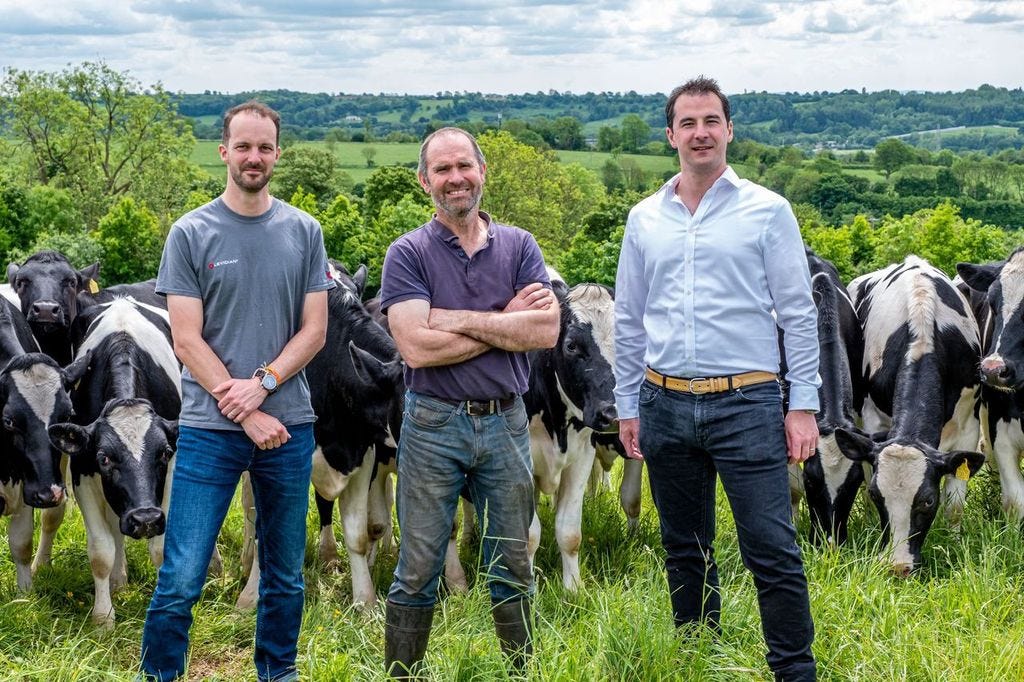From farm to flight: The unlikely role of cow manure in decarbonisng aviation
Levidian’s innovative LOOP system converts cattle waste into graphene and hydrogen, promising a cleaner, lighter future for aviation.
At Worthy Farm, home of the Glastonbury Festival, an unlikely transformation is taking place.
Waste from the farm's cattle herd, ordinarily a source of methane emissions, is being converted into two materials that could help decarbonise aviation: ultra-strong graphene and clean hydrogen, thanks to technology from UK company Levidian.
Levidian's proprietary LOOP system uses microwave plasma technology to crack methane into its constituent parts. "We apply microwave energy in a patented nozzle device, allowing us to split methane incredibly efficiently and at scale," explains Levidian CTO Alistair Donaldson.
Unlike conventional approaches, which burn methane and then attempt to recapture carbon as CO2, Levidian's LOOP system intercepts the carbon before combustion, extracting it in solid graphene form. This eliminates the inefficiencies of capturing dispersed CO2 gas and provides a high-value material in the process.
The graphene revolution
Since its discovery at the University of Manchester in 2004, graphene has been hailed as a miracle material. Stronger than steel, lighter than aluminium, and more conductive than copper, graphene has the potential to revolutionise multiple industries, including aerospace.
However, despite its promise, graphene’s widespread adoption has been hindered by cost and scalability challenges. Levidian believes its LOOP technology offers a solution. "Graphene is essentially a superpower," says Donaldson. "Wherever it’s added, it enhances performance and reduces emissions."
For aviation, this could mean:
Lighter aircraft: Graphene-infused materials can reduce weight, leading to lower fuel consumption and emissions.
Greater durability: Aircraft components last longer, reducing maintenance costs and material waste.
Improved safety: Graphene’s conductivity allows it to be used in lightning protection systems, and its thermal properties offer potential for de-icing solutions.
Aviation industry research supports these claims. Graphene-enhanced composite materials have demonstrated a 20-30% reduction in weight while maintaining – or even improving – structural integrity. A graphene-coated remote-controlled plane tested at the Farnborough Airshow showcased superior strength, impact resistance, and drag reduction.
Levidian’s technology also produces hydrogen, another crucial piece of the aviation sustainability puzzle. Unlike conventional hydrogen production, which relies on energy-intensive processes like steam methane reforming, LOOP creates clean hydrogen without additional emissions.
A key advantage is that LOOP units can be deployed on-site, eliminating transport and storage challenges hindering hydrogen adoption. “We see LOOP as a ‘mini circular economy in a box,’” Donaldson explains. “It transforms a potent greenhouse gas into valuable resources without requiring additional inputs like water or catalysts.”
Beyond direct hydrogen use, Levidian has also proven it can create syngas – a key precursor to sustainable aviation fuel (SAF). Donaldson told us that this aspect is still in development, but it holds the potential to address the industry’s SAF supply constraints.
Commercial viability
Importantly, Levidian operates without government subsidies. "We are a post-green subsidy technology," says Donaldson. "The urgent need is for technologies that are available now and can scale now – this is key to unlocking what we have left of the decade of impact."
Levidian has commercial traction to support this claim. Its first-generation LOOP system produces 1-2 tons of graphene per year, but its second-generation system increases this to 15-20 tons annually.
Current LOOP units have been deployed in sectors ranging from agriculture (Worthy Farm - in partnership with clean hydrogen developer, Hexla) to large-scale gas processing (ADNOC’s Habshan facility in Abu Dhabi), with manufacturing now spanning the UK, Middle East, and US.
As Levidian looks to raise Series B funding, its focus is shifting toward aviation-specific applications. While graphene’s potential in aerospace is clear, adoption takes time due to strict industry regulations. “The validation cycle for aerospace is long, but the impact will be worth it,” Donaldson notes.
In the meantime, Levidian is forging partnerships with materials companies, SAF producers, and industrial hydrogen users. If successful, its technology could significantly decarbonise not just aviation but multiple hard-to-abate industries.
Future prospects: can it scale fast enough?
Levidian’s LOOP technology presents a rare combination of immediate commercial viability and long-term potential. By turning a major greenhouse gas into high-value materials, it tackles climate change from two angles: emissions reduction and next-generation materials innovation.
The key challenge is speed. Can Levidian scale quickly enough to make a tangible impact within the crucial next decade? However, growing industry interest and a proven commercial model are certainly positive signs.
For February 2025, we’re pleased to feature 4AIR as our exclusive Sponsor of the Month. 4AIR is leading the way with the industry’s first framework to address aviation’s climate impact – offering clear, verifiable pathways to reduce and counteract emissions. Discover their services, including compliance monitoring and The Assure SAF Registry, to advance your sustainability efforts.





